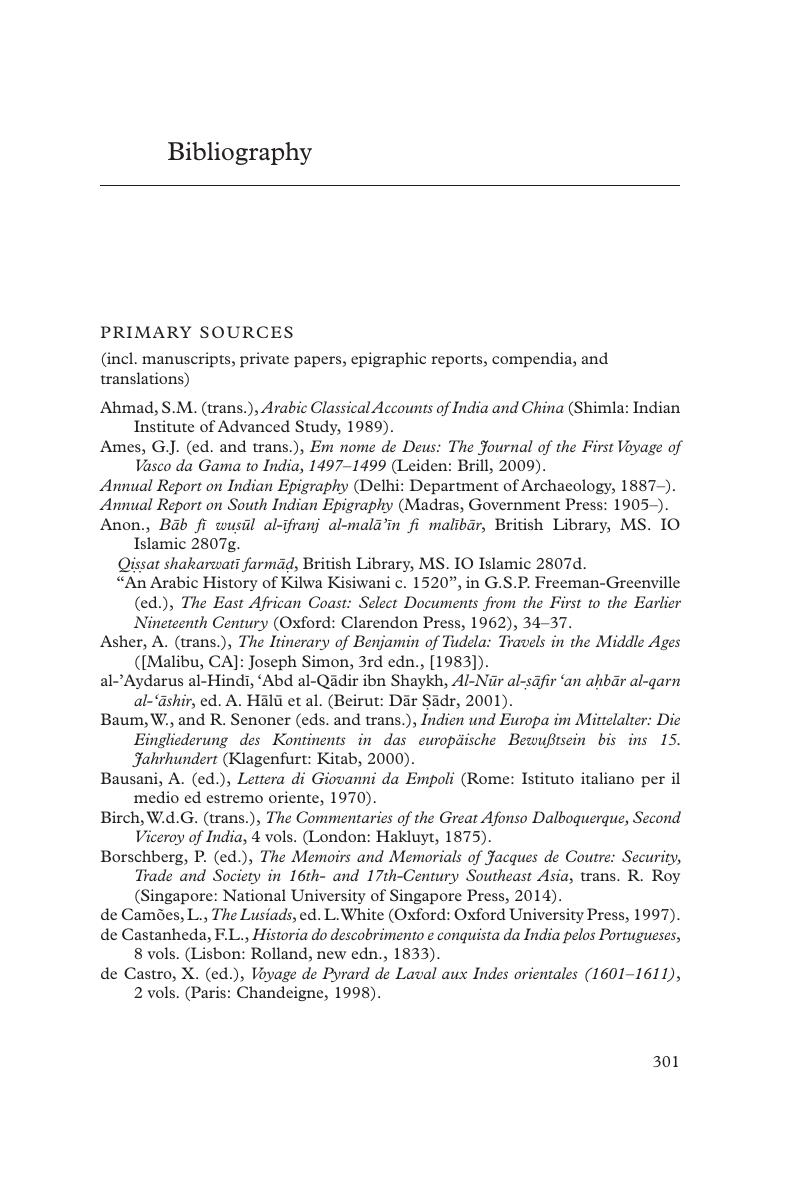Bibliography
Published online by Cambridge University Press: 28 April 2018
Summary

Information
- Type
- Chapter
- Information
- Monsoon IslamTrade and Faith on the Medieval Malabar Coast, pp. 301 - 338Publisher: Cambridge University PressPrint publication year: 2018
